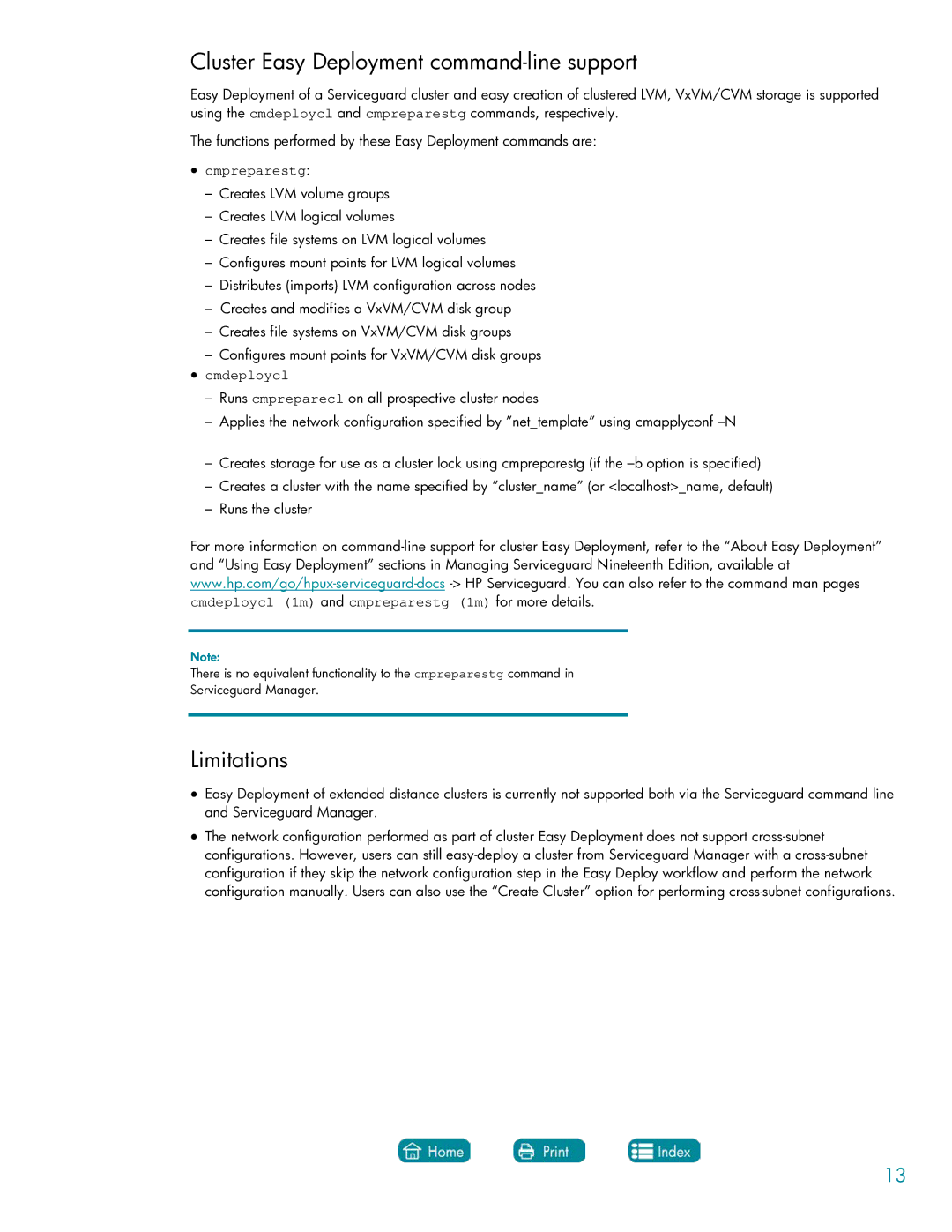
Cluster Easy Deployment command-line support
Easy Deployment of a Serviceguard cluster and easy creation of clustered LVM, VxVM/CVM storage is supported using the cmdeploycl and cmpreparestg commands, respectively.
The functions performed by these Easy Deployment commands are:
•cmpreparestg:
–Creates LVM volume groups
–Creates LVM logical volumes
–Creates file systems on LVM logical volumes
–Configures mount points for LVM logical volumes
–Distributes (imports) LVM configuration across nodes
–Creates and modifies a VxVM/CVM disk group
–Creates file systems on VxVM/CVM disk groups
–Configures mount points for VxVM/CVM disk groups
•cmdeploycl
–Runs cmpreparecl on all prospective cluster nodes
–Applies the network configuration specified by ”net_template” using cmapplyconf
–Creates storage for use as a cluster lock using cmpreparestg (if the
–Creates a cluster with the name specified by ”cluster_name” (or <localhost>_name, default)
–Runs the cluster
For more information on
Note:
There is no equivalent functionality to the cmpreparestg command in
Serviceguard Manager.
Limitations
•Easy Deployment of extended distance clusters is currently not supported both via the Serviceguard command line and Serviceguard Manager.
•The network configuration performed as part of cluster Easy Deployment does not support
13
